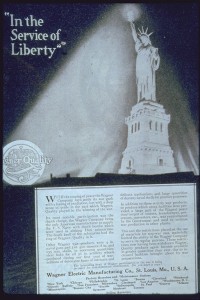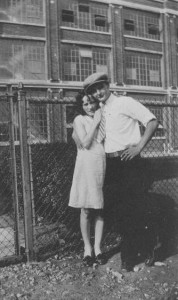|
FLASHLIGHT |
|||||||||||||||||||||||
|
|
FLASHLIGHT |
||||||||||
|
||||||||||
|
FLASHLIGHT |
|||
| Page 3 |
MARCH, 2011 |
||
|
CLASS OF 1965 'RAT PACK' YEARLY MEETING |
|||
|
Sally (Beebe) Wills, Millie (Blackwell) Wright, Sharon (Cain) Henley,Louise (Landsbury) Overbey,Audrey (Pilkenton) Pappas,Mary (Treadway) Roades, Linda (Waldrum) Berghold, and Sharon (Zeltmann) Chiesa. |
|||
|
|
|
|
|
|
|
|
|
|
 Every year snowbirds head south escaping from cold winters, including a lot of Alumni. These Wellstonites have been enjoying the emerald green water and sugar sand beaches of Destin for the last three years. They celebrated Valentine’s Day at the Ocean Club, a favorite local restaurant. Plans have been made to meet again next year. Left to right: JoAnn Williams '60, Pat Miner '62, Larry Turner '60 and Jerry Slatton '57. |
|||
|
I just want to make a couple
of comments. I have no clue,
other than my imagination,
what "Steven Jones" street
is, unless maybe our old
Delaware?! What the heck is
"R.M. Morse" street?
Comments on Etzel says,
"Between Steven Jones and
Skinker"!! Again, I'm
guessing--would this be
between our old Delaware and
the Hodiamont streetcar
track? We older folks could
more readily recognize THAT
description! My uncle, Lowell Waldron, was president of Local 1104 at least one term; maybe more. When I was a little girl, there was a HUGE brown sided house to the right of the "hall" as you're facing it. Uncle Lowell bought that monster to fix up and rent out. I remember being there during the "fixing up" process, and I feel certain I was a LOT of help!! For any of my FB friends who are remotely interested, I have many photo albums, one of which is my maternal ancestors (The Waldron/Mock one) which have a couple of old news articles in it. One is dated Dec. 19, 1945, and shows my uncle, as well as others, on the picket line in front of Wagner. Another has my uncle and a few other guys looking over the (this) union hall building being constructed. It is dated Feb. 15, 1949. As long as we're taking trips down "Memory Lane," I want to take a BIG one!!
I am so thankful and
grateful to all who take
the time and make the
effort, to compile all of
the information and
pictures for posterity and
the enjoyment of others. |
|||
|
|
|||
|
FLASHLIGHT |
|||||||||||||||||||||||||||||||||||
|
|||||||||||||||||||||||||||||||||||
|
FLASHLIGHT |
||||||||
|
|
FLASHLIGHT |
|||
|
|||
|
|
FLASHLIGHT |
||||||||||
|
||||||||||
|
||||||||||






 How do you store your pictures? Framing, scrapbooking or sticking them in shoeboxes? With the advent of digital photography, there are several options for sharing the photos you love, making them last a good, long time: You can either:
How do you store your pictures? Framing, scrapbooking or sticking them in shoeboxes? With the advent of digital photography, there are several options for sharing the photos you love, making them last a good, long time: You can either: 











 I
cannot tell you how much I
have enjoyed exploring all
the info available for us to
read/look at
I
cannot tell you how much I
have enjoyed exploring all
the info available for us to
read/look at 

 With
regard to your request for information about the Hodiamont
Streetcar line, I rode the Hodiamont a lot, usually going
to the Grand Avenue area or all the way downtown. My first
real job, in the summer of 1948 after I graduated from WHS,
was at the Wagner Electric Brake division on South Broadway
and I took the Hodiamont Car all the way down to Broadway,
then transferred to the Broadway car for another long ride.
With
regard to your request for information about the Hodiamont
Streetcar line, I rode the Hodiamont a lot, usually going
to the Grand Avenue area or all the way downtown. My first
real job, in the summer of 1948 after I graduated from WHS,
was at the Wagner Electric Brake division on South Broadway
and I took the Hodiamont Car all the way down to Broadway,
then transferred to the Broadway car for another long ride.

 I
know a little
about the
Hodiamont
streetcar. After
it made its stop
at the Wellston
Loop it
continued on
making three
more stops at
Lotus, Wabada
and Kennerly. It
made a loop at
Suburban Gardens
where the
motormen could
rest and use the
little outhouse
there.
I
know a little
about the
Hodiamont
streetcar. After
it made its stop
at the Wellston
Loop it
continued on
making three
more stops at
Lotus, Wabada
and Kennerly. It
made a loop at
Suburban Gardens
where the
motormen could
rest and use the
little outhouse
there. 
 Carsten
Bowman '47
passed away
Monday, February
7th with his
family by his
side. Carsten
had suffered
many years with
emphysema.
Carsten would
have graduated
in '45 if he not
joined the
service during
WWII, helping to
defend our
country.
He completed his
high school
education after
returning home.
Carsten
Bowman '47
passed away
Monday, February
7th with his
family by his
side. Carsten
had suffered
many years with
emphysema.
Carsten would
have graduated
in '45 if he not
joined the
service during
WWII, helping to
defend our
country.
He completed his
high school
education after
returning home.
 Betty
(Grant) Blume,
Class of 1951
passed away
January 30th in
her sleep. She
had been
recovering from
(heart) bypass
surgery. Betty
was laid to rest
on February
4th.
Betty
(Grant) Blume,
Class of 1951
passed away
January 30th in
her sleep. She
had been
recovering from
(heart) bypass
surgery. Betty
was laid to rest
on February
4th. 
 Jacquelyn
(Smith) Klotzer - Class
of 1951
passed away
February 8th
from
complications of
a stroke.
Jacquelyn
(Smith) Klotzer - Class
of 1951
passed away
February 8th
from
complications of
a stroke.

 Barbara
Lee
DiPaolo (nee
Taylor)
- class
of 1957
passed away
Monday January
17, 2011
from heart
failure.
Barbara had a
successful lung
transplant November,
2009. In 2010
she developed
cancer in her
other lung.
During her
struggle to
regain
her health back,
her heart became
very weak and
unable to
continue the
fight.
Barbara
Lee
DiPaolo (nee
Taylor)
- class
of 1957
passed away
Monday January
17, 2011
from heart
failure.
Barbara had a
successful lung
transplant November,
2009. In 2010
she developed
cancer in her
other lung.
During her
struggle to
regain
her health back,
her heart became
very weak and
unable to
continue the
fight.





